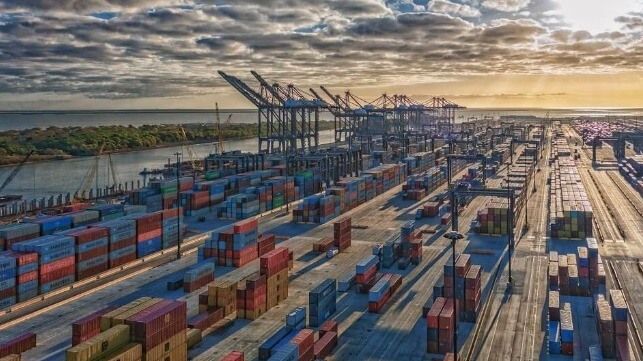Boom Times at Port Houston's Container Terminals

Port Houston's container operations are booming, exceeding any pre-pandemic expectations of growth. In the first quarter of the year, it handled just over 900,000 TEU, improving on last year's record-setting Q1 by a margin of 20 percent.
The port says that it is adapting quickly to accommodate all of the extra traffic. In March, the port waived dockage fees for ships waiting at anchor for gang assignments, allowing them to berth while waiting. This accelerates the pace of cargo operations and helps the port move cargo through its terminals faster. Port Houston also recently added an extra hour to the gate schedule and will roll out Saturday gate hours starting in June. In addition, it is moving up its timetable for terminal infrastructure, like doubling the gate capacity at Barbours Cut Container Terminal last month.
Port Houston is experiencing the same rising tide that is lifting volumes at other American seaports. Los Angeles and Long Beach both posted their busiest first quarter ever in the first three months of 2022, and volumes at key East Coast gateways like Savannah and Port of Virginia have been strong as well.
To accommodate long term growth, Port Houston and the federal government will spend $1.1 billion on widening and deepening the port's ship channel. The project is authorized and has been receiving regular federal funding increments, and it should be completed by 2025. It will allow unimpeded inbound and outbound passage for larger container ships and tankers at the same time.
At the end of December, Port Houston was also awarded a federal grant of $18 million by the Maritime Administration to expand the port’s Bayport Container Terminal as well. This grant will help create an additional 39 acres of yard space.
In addition, according to JOC, leading U.S. rail line BNSF is testing out an intermodal rail service to and from the port's Barbours Cut Container Terminal. The terminal has been without a rail service since 2019; a renewed container-on-rail option would give ocean freight customers a new possibility for delivering goods deep into the Midwest.
